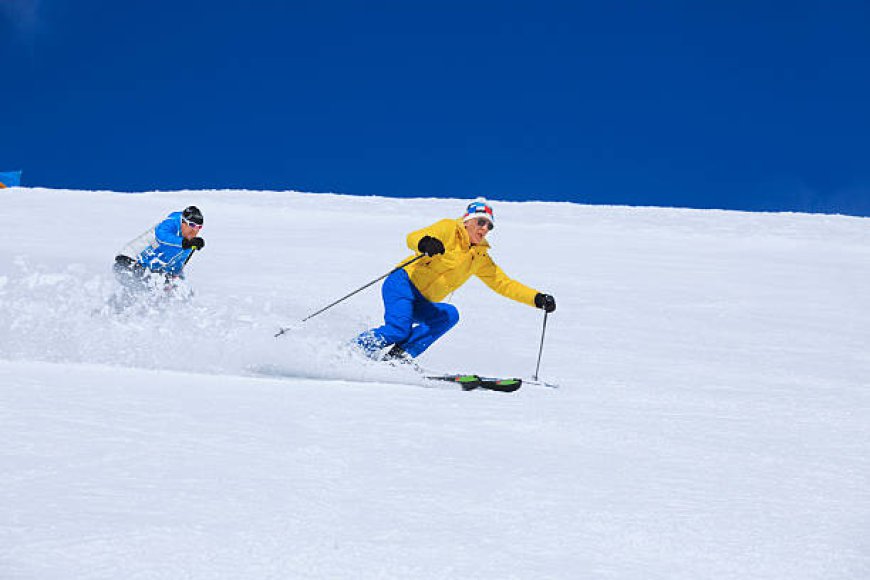Mastering the Art of Ski Waxing: Techniques and Benefits

Ski waxing is a fundamental aspect of ski maintenance that can dramatically enhance your overall skiing experience. For both recreational and competitive skiers, understanding the importance of ski waxing, along with mastering the techniques involved, is vital for optimal performance on the slopes. This article will delve into the benefits of ski waxing, the types of wax available, and the step-by-step process of how to wax your skis effectively.
Why Ski Waxing Matters
Ski waxing plays a crucial role in the performance and longevity of your skis. The main purpose of waxing is to reduce friction between the ski base and the snow, allowing for smoother and faster rides. Without proper waxing, skis can become sluggish, making it difficult to maintain speed and control. Regular waxing not only enhances glide but also protects the base of the ski from damage.
Advantages of Regular Ski Waxing
-
Enhanced Performance: The most apparent benefit of ski waxing is improved performance. Waxed skis glide faster and require less effort to move, allowing skiers to maintain speed without expending excessive energy.
-
Increased Control: Properly waxed skis offer better edge grip and control, making it easier to navigate turns and challenging terrains. This is particularly important for advanced skiers who tackle steeper slopes.
-
Protection Against Damage: Regular waxing hydrates the ski base, preventing it from drying out and becoming prone to scratches and gouges. This protective layer extends the lifespan of the skis, saving you money in the long run.
-
Adaptation to Conditions: Different types of wax can be used based on snow conditions. For instance, softer wax is ideal for warmer, wetter snow, while harder wax is better for cold, dry conditions. By using the appropriate wax, you can optimize your skis for various weather conditions.
Types of Ski Wax
Ski wax comes in various forms, primarily divided into fluorocarbon and non-fluorocarbon waxes.
-
Fluorocarbon Wax: This type of wax is designed for racing and high-performance skiing. It provides superior glide and water repellency, making it ideal for competitive skiers. However, it can be more expensive and may require specialized techniques for application.
-
Non-Fluorocarbon Wax: This is more suitable for recreational skiers. It is easier to apply and can still provide excellent performance. Non-fluorocarbon waxes are available in various formulations to suit different temperature ranges.
The Ski Waxing Process
-
Gather Your Supplies: To begin, you'll need ski wax, a waxing iron, a plastic scraper, a brush, and a clean cloth. Ensure that you have a suitable work area, preferably a flat surface with adequate ventilation.
-
Clean the Skis: Remove any old wax and dirt from the ski base using a scraper. It’s essential to have a clean surface for the new wax to adhere properly.
-
Melt and Apply Wax: Heat the waxing iron to the appropriate temperature and melt the wax, allowing it to drip onto the ski base. Spread the wax evenly using the iron, making sure to cover the entire base without overheating it.
-
Let It Cool: Allow the wax to cool and harden for a few minutes. This step is crucial for ensuring that the wax penetrates the ski base.
-
Scrape Excess Wax: Once cooled, use a plastic scraper to remove the excess wax, leaving a thin, even layer on the base. This helps in achieving optimal glide.
-
Brush the Base: Finally, brush the ski base with a nylon brush to smooth it out and enhance the glide. This step will also help to remove any remaining wax particles.
Conclusion
Ski waxing is an indispensable skill for anyone who enjoys skiing. The benefits of proper ski waxing include enhanced performance, better control, and increased protection for your skis. By understanding the various types of wax available and following the correct application techniques, you can ensure that your skis are always ready for the slopes. Make ski waxing a regular part of your equipment maintenance to fully enjoy your time on the snow, whether you’re carving down a powder-filled mountain or enjoying a leisurely day at the resort.

 saulswanson54
saulswanson54